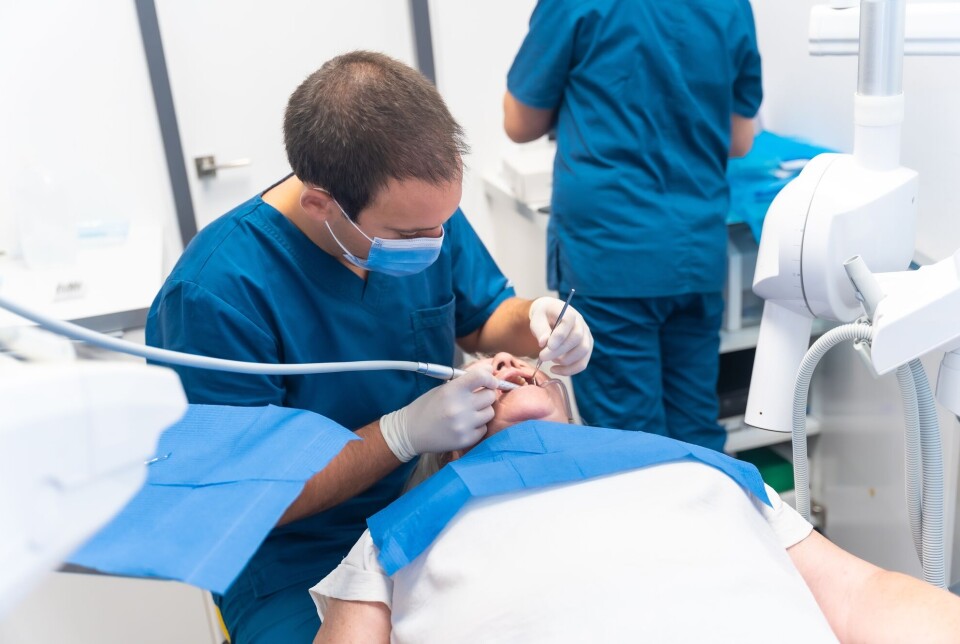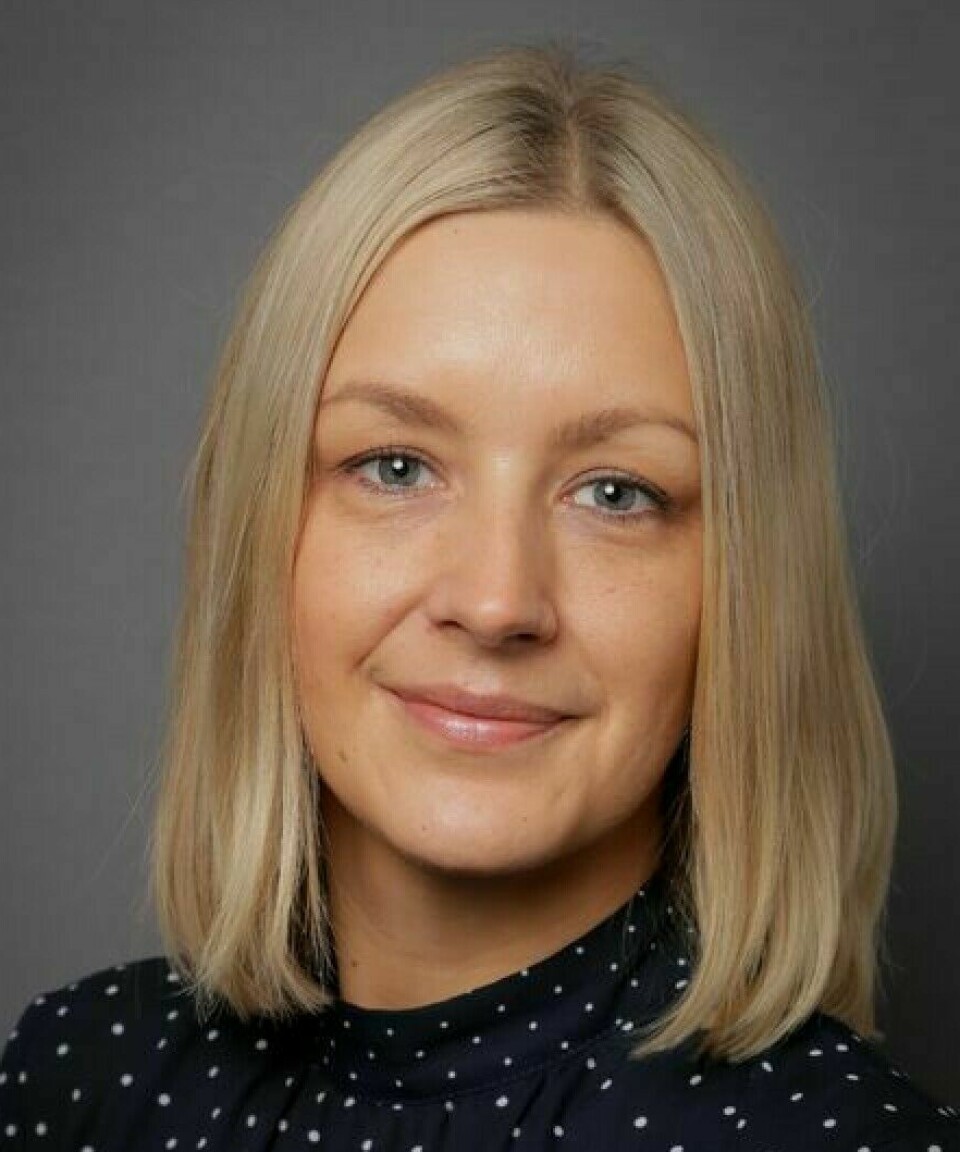
This group of patients are often met by uncertain dentists
Many older adults only go to the dentist when they have a dental emergency, says researcher Marte-Mari Uhlen-Strand.
A significant proportion of dental health personnel in Norway are challenged when dealing with elderly patients in home health care services (HHCS), according to Norwegian researchers of a new study published in the scientific journal BMC Oral Health.
The dental health of many patients in this group is poor – and that number is growing fast.
A total of 620 dental health care personnel participated in the study that was based on a survey. Eighty-seven per cent of the respondents were women, 466 were dentists and 244 were dental hygienists.
Calls for better communication
The main researcher behind the new study is Marte-Mari Uhlen-Strand at the Dental Health Services’ Competence Centre for Eastern Norway (TKØ) .
Many people are calling for increased support for dental health services.
As stated in Norway’s law on dental health services, elderly people living at home and receiving municipal health and care services are entitled to free public dental health services, if the services they receive are considered home health care.
This is where certain challenges arise.
Home health care services and dental health services are managed at different administrative levels in the public sector.
“Communication between the services is not always that simple,” says Uhlen-Strand.
The information doesn’t always reach its intended destination, which can become a problem with the increasing number of elderly people in the population and more elderly people retaining their own teeth.

Want to stay at home longer
More and more elderly people are living at home, a policy that is supported by the Norwegian government. This can raise the threshold for being able to get to a dentist.
“We know that older adults with home health care have worse dental health than the rest of the population,” says Uhlen-Strand.
This means that when elderly people enter a nursing home, their dental health has often deteriorated during the last years they lived at home.
Researchers still know very little about this patient group. Older adults are entitled to free dental care in the public dental health service, but many of them do not use it.
“We don't quite know why – whether they haven't been told about this entitlement, whether they've forgotten about it or whether they don't want to use the public dental health service even though they know their rights.”
Often time-consuming
The researchers had only limited knowledge about dental health personnel's experiences with the patient group.
They therefore sent out a national survey to dental health personnel in both public and private dental health services. The aim was to learn more about the practices of dental hygienists and dentists when dealing with their older patients, the challenges they experience and their self-perceived knowledge.
“The findings support what we’ve believed to be true, that dental health services for elderly people receiving home health care services are often time-consuming. Dentists and dental hygienists also perceive it as challenging.”
Uhlen-Strand and her colleagues found that many dental health personnel were unsure of their own knowledge of older people with complex diagnoses and disorders.
“They find that time is a major challenge in treating these patients.”
Some dental health personnel also respond that they are frustrated by the lack of information about the patients they receive. They do not always have all the information they need the first time they treat the patient and have to spend time getting to know the patient better.
Dentists spend most of their time on existing fillings
Why is treating older patients more complicated?
“First of all, they’ve lived a long life and had their teeth for a long time, and many people in this generation have received a lot of dental treatment earlier in life.”
Elderly patients often have numerous restorations that need to be fixed. Earlier this year, researcher Frode Staxrud of the Nordic Institute of Dental Materials (NIOM) stated that repairing existing fillings is what Norwegian dentists spend the most time on.
These repairs become more difficult the older and sicker you get, says Uhlen-Strand.
“Teeth with complicated restorations place higher demands on daily oral care than teeth without restorations, and reduced motor abilities can make it challenging or impossible for some people to brush their teeth themselves.”
Older patients may also find it more difficult to lie back in the dentist's chair, or may have pain that makes a dentist visit difficult, and not least, patients with dementia can be demanding.
Illness and medications can also predispose older patients to various dental diseases.
Many older adults have poor dental health
Researchers have concluded in several studies and surveys that many older Norwegian adults have poor dental health. Several studies have also shown that older people’s visits to the dentist are too infrequent.
Gunhild Vesterhus Strand, a professor at the University of Bergen, carried out a study with colleagues in which 418 Bergen patients were sent a letter offering a free dental health check-up in the public dental health service between 2015 and 2018. One year later, 18 per cent had made use of the offer.
Strand clarifies in her report that many of these patients presumably see their private dentist. Nevertheless, she believes the findings indicate ‘a significant under-consumption.’
The report proposes introducing travelling dental nurses to prevent dental problems in older adults in home health care services.
Difficult to get to the dentist
The Norwegian government recently expanded the county municipal dental health service. Young adults aged 19 to 24 pay 25 per cent of the cost, while the public sector covers the remaining 75 per cent.
Staxrud commented that which population group to start with is highly debated – whether with the younger people, as the government is now doing, or with the elderly.
From the age of 85 onwards, too many people’s dental health declines. Many people are unable to take care of their dental hygiene themselves, he says.
“Just getting to the dentist when you need to is a big problem. You may need to ask your children for help, and there’s no guarantee that they can take the time off. These are disturbing and complicating factors,” says Staxrud.
References:
Marte-Mari Uhlen-Strand et.al.: Dental care for older adults in home health care services - practices, perceived knowledge and challenges among Norwegian dentists and dental hygienists. BMC Oral Health., 2023.
Report by Gunhild Vesterhus Strand: Tannhelsetilbudet til pasienter med Vedtak om hjemmesykepleie (Dental health service for patients with Decision on home care services). Final report 2015-2018. Collaborative project between the Centre for Development of Institutional and Home Care Services (USHT) in Bergen, Norwegian public dental health care services (DOT) in Hordaland and the University of Bergen (UiB). Only in Norwegian.
———
Read the Norwegian version of this article at forskning.no





































